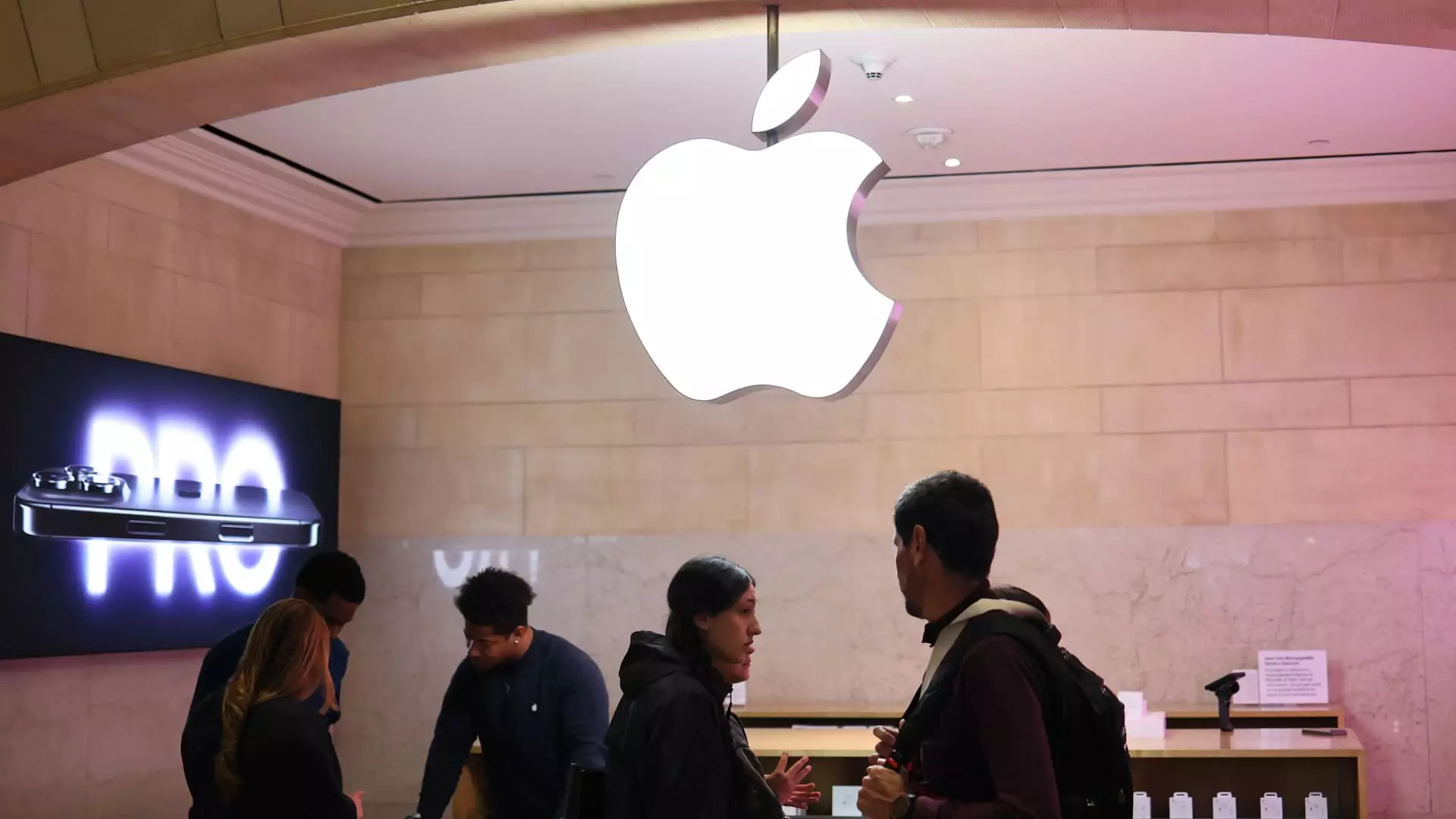In today’s economic environment, marked by rising geopolitical tensions and erratic fiscal policies, companies like Apple Inc. find themselves perched precariously on the edge of uncertainty. Dan Ives of Wedbush Securities has recently taken a sober view of Apple’s future, slashing the price target for the tech giant from $325 to $250, a staggering 23% reduction. However, what is particularly troubling is not just the downgrade itself, but the broader implication of President Trump’s ongoing tariff regime, which Ives suggests forces Apple into a quagmire with implications rippling through its entire supply chain.
Ives maintains a long-term bullish outlook on Apple, but it is impossible to ignore the immediate threats posed by the tariffs that have ensnared the technology sector like a trap. With approximately 90% of iPhones produced in China, the company’s business model is significantly vulnerable. As a proponent of free-market principles, it is disappointing to see how government intervention through tariffs creates paradoxical situations where the very products Americans cherish could become luxury items due to artificially inflated prices.
Tariffs and the Cost of Technology
Recent developments illustrate the dramatic anti-business sentiment fostered by these tariffs. Apple’s shares suffered an 18% decline in April alone, driven by apprehensions over a new 10% baseline tariff, coupled with steep escalations on specific imports. The looming threat of retaliation from China—announcing a 34% tariff on U.S. imports—only exacerbates the situation. For a company attempting to balance its supply chain while maintaining a robust market presence, this sudden volatility could prove disastrous.
Ives’ assertion that the “tariff economic Armageddon” represents a catastrophe for Apple offers insight into a much larger picture—namely, the effects these policies have on innovation and consumer choice. Higher tariffs invariably lead to elevated costs for consumers and a potential decline in demand for innovative products. It is difficult to fathom a future where a $1,000 iPhone becomes a realistic option for the average American household, effectively diminishing Apple’s value proposition in a market that prizes accessibility and quality.
The Struggle for Domestic Manufacturing
Apple’s purported efforts to invest over $500 billion in U.S. manufacturing over the next four years should be commended, yet the complexities associated with relocating a significant portion of its production facilities cannot be understated. Ives estimates that even an attempt to move 10% of Apple’s supply chain to the U.S. would require exorbitant investment—approximately $30 billion—and a protracted timeline of three years. Such themes reveal a center-right concern about the efficiency of government policy in enhancing domestic manufacturing capabilities.
Admirably, Apple has made strides toward increasing its domestic production; however, any meaningful shift in supply chains just to mitigate the tariff impacts presents its own set of challenges. The potential for significant disruption, both logistically and financially, means consumers may face a reality where their beloved high-tech gadgets are unsustainably priced, resulting in diminished accessibility, or worse, innovation stall due to reduced funding derived from lower sales.
Consumer Impact and Market Dynamics
The effects of these tariffs do not merely halt the advancement of a corporation, but they reverberate through the economy, affecting global consumer sentiment. Uncertainty breeds apprehension, and the current trajectory suggests a decline in global consumer demand could stall the momentum that has characterized the tech industry. Ives compellingly states that the uncertainty surrounding tariffs is likely to inhibit any forward guidance from tech companies, further entrenching the difficult atmosphere.
As tariffs impact Apple’s cost structure, the inevitable rise in retail prices could generate a paradox where a slowdown in consumer spending leads to diminished revenue, subsequently forcing Apple to reconsider its fundamental operational strategies. Such decisions will have lasting ramifications not just for the company but the broader economy, indicating a significant shift in the balance between corporate profitability and consumer affordability.
The reality is that the American spirit of innovation finds itself stifled under the weight of tariffs that seem to disregard the delicate nature of the global supply chain. In a time when coherent policymaking could nurture technological growth, we are instead witnessing an unfortunate storyline unfold—one that pits a titan of industry against arbitrary government regulation with detrimental effects on consumers. For Apple, the question now shifts from whether the product will remain a luxury to whether it can remain at all.

